formerly eScholarship Editions


|
|
|
|
Your search for
'Literature' in subject
found 210 book(s). | Modify Search | Displaying 161 - 180 of 210 book(s) | |
| 161. | 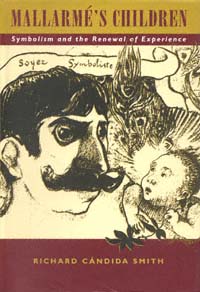 | Title: Mallarmé's children: symbolism and the renewal of experience Author: Smith, Richard Cándida Published: University of California Press, 2000 Subjects: History | Intellectual History | Art | European Studies | Literature Publisher's Description: In a narrative gracefully combining intellectual and cultural history, Richard Cándida Smith unfolds the legacy of Stéphane Mallarmé (1842-1898), the poet who fathered the symbolist movement in poetry and art. The symbolists found themselves in the midst of the transition to a world in which new media devoured cultural products and delivered them to an ever-growing public. Their goal was to create and oversee a new elite culture, one that elevated poetry by removing it from a direct relationship to experience. Instead, symbolist poetry was dedicated to exploring discourse itself, and its practitioners to understanding how language shapes consciousness.Cándida Smith investigates the intellectual context in which symbolists came to view artistic practice as a form of knowledge. He relates their work to psychology, especially the ideas of William James, and to language and the emergence of semantics. Through the lens of symbolism, he focuses on a variety of subjects: sexual liberation and the erotic, anarchism, utopianism, labor, and women's creative role. Paradoxically, the symbolists' reconfiguration of elite culture fit effectively into the modern commercial media. After Mallarmé was rescued from obscurity, symbolism became a valuable commodity, exported by France to America and elsewhere in the market-driven turn-of-the-century world. Mallarmé's Children traces not only how poets regarded their poetry and artists their art but also how the public learned to think in new ways about cultural work and to behave differently as a result. [brief] Similar Items |
| 162. | 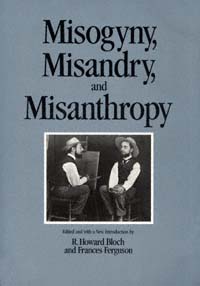 | Title: Misogyny, misandry, and misanthropy Author: Bloch, R. Howard Published: University of California Press, 1989 Subjects: Literature | English Literature Publisher's Description: These essays, originally comprising an issue of Representations , explore the relation between gender, eroticism, and violence through close analysis of a range of both high and popular cultural forms, from R. Howard Bloch on medieval theology to Carol Clover on contemporary slasher films. Does misogyny differ from misandry? Can author intention be separated from social context? Do good women counterbalance or reenforce the misogyny of negative examples? Is an obsession with women itself misogynistic? These questions are approached from various angles by Joel Fineman, Charles Bernheimer, Jacqueline Lichtenstein, Frances Ferguson, Naomi Schor and Gillian Brown. In sum, the authors detail not only the ways in which gender is represented, but also the changes to which representation subjects questions of sexual difference. [brief] Similar Items |
| 163. | 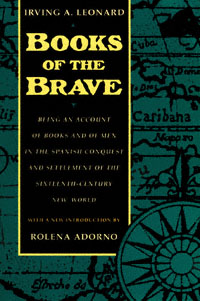 | Title: Books of the brave: being an account of books and of men in the Spanish Conquest and settlement of the sixteenth-century New World Author: Leonard, Irving Albert 1896- Published: University of California Press, 1992 Subjects: Literature | Comparative Literature | Latin American History | Latin American Studies Publisher's Description: Since its original publication in 1949, Irving A. Leonard's pioneering Books of the Brave has endured as the classic account of the introduction of literary culture to Spain's New World. Leonard's study documents the works of fiction that accompanied and followed the conquistadores to the Americas and goes on to argue that popular texts influenced these men and shaped the way they thought and wrote about their New World experiences.For the first time in English, this edition combines Leonard's text with a selection of the documents that were his most valuable sources - nine lists of books destined for the Indies. Containing a wealth of information that is sure to spark future study, these lists provide the documentary evidence for what is perhaps Leonard's greatest contribution: his demonstration that royal and inquisitorial prohibitions failed to control the circulation of books and ideas in colonial Spanish America.Rolena Adorno's introduction signals the lasting value of Books of the Brave and brings the reader up to date on developments in cultural-historical studies that have shed light on the role of books in Spanish American colonial culture. Adorno situates Leonard's work at the threshold between older, triumphalist views of Spanish conquest history and more recent perspectives engendered by studies of native American peoples.With its rich descriptions of the book trade in both Spain and America, Books of the Brave has much to offer historians as well as literary critics. Indeed, it is a highly readable and engaging book for anyone interested in the cultural life of the New World. [brief] Similar Items |
| 164. | 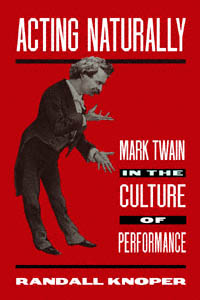 | Title: Acting naturally: Mark Twain in the culture of performance Author: Knoper, Randall K 1953- Published: University of California Press, 1995 Subjects: Literature | American Literature | Literary Theory and Criticism | Twain | American Studies Publisher's Description: The phenomenon of performance is central to Mark Twain's writing and persona. But Twain's performative aspects have usually been dismissed as theatrical and discounted as lowbrow burlesque. Randall Knoper takes Twain's theatricality seriously and shows how Twain's work both echoes and engages the social and cultural problems embodied in nineteenth-century popular entertainments.Knoper draws on theater history, theories of acting and bodily expression, psychology and physiology, scientific accounts of spiritualism, and commercial spectacles to demonstrate Twain's use of "acting" and the "natural" in his creative explorations. This book enlarges our understanding of Mark Twain - the artist and the man - and also provides a window into a culture whose entertainments registered the sexual, racial, economic, and scientific forces that were transforming it. [brief] Similar Items |
| 165. | 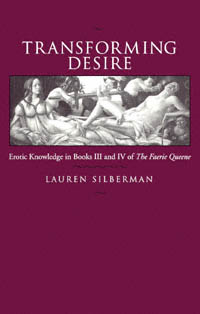 | Title: Tran sforming desire: erotic knowledge in Books III and IV of the Faerie queene Author: Silberman, Lauren Published: University of California Press, 1995 Subjects: Literature | English Literature | Literary Theory and Criticism | Men and Masculinity | Women's Studies | Poetry | Renaissance Literature Publisher's Description: The Faerie Queene anticipates postmodernist concerns with destabilizing language, and Lauren Silberman's stimulating study of Books III and IV of the poem proceeds from the assumption that Spenser has something important to say to us in the late twentieth century.In these books, Spenser exposes fictions of total control for what they are - fictions. The text affirms the value of risk and improvisation over the temptation to seek guarantees. The books examine the role of desire in moving us to function in an uncertain world and tempting us to foreclose that uncertainty by strategies that seek to frame knowledge through total mastery of it. [brief] Similar Items |
| 166. | 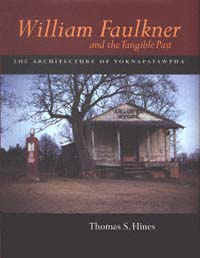 | Title: William Faulkner and the tangible past: the architecture of Yoknapatawpha Author: Hines, Thomas S Published: University of California Press, 1997 Subjects: Architecture | Architectural History | Literature | American Literature | United States History Publisher's Description: The world of William Faulkner is seen from a new perspective in Thomas Hines's imaginative and many-faceted study. Hines assesses the impact of the built environment on Faulkner's consciousness and shows how the architecture of the writer's fictional county of Yoknapatawpha reflects the actual architecture of Oxford, Mississippi, and neighboring areas. Over 110 distinctive photographs, in both color and black-and-white, beautifully complement the text, making this book both a reading and viewing pleasure.Much has been written on the role of nature in Faulkner's work, but architecture and the built environment - the opposite of nature - have been virtually ignored. Arguing that nature and architecture are of equal importance in Faulkner's cosmos, Hines examines the writer's use of architectural modes - primitive, classical, gothic, and modern - to demarcate caste and class, to convey mood and ambience, and to delineate character. Hines provides not only another way of understanding Faulkner's work but also a means of appreciating the power of architecture to reflect what Faulkner called "the comedy and tragedy of being alive."Hines's gifts as an architectural historian and photographer and his intimate knowledge of Faulkner country are evident throughout this handsome book. Combining cultural, intellectual, architectural, and literary history, William Faulkner and the Tangible Past will take Faulkner lovers, as well as lovers of architecture, on a fascinating tour of Yoknapatawpha County. [brief] Similar Items |
| 167. | 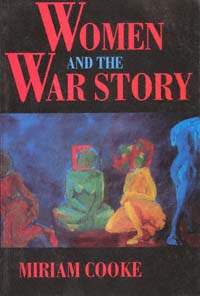 | Title: Women and the war story Author: Cooke, Miriam Published: University of California Press, 1997 Subjects: Literature | Gender Studies | Middle Eastern Studies | Literary Theory and Criticism | European History Publisher's Description: In a book that radically and fundamentally revises the way we think about war, Miriam Cooke charts the emerging tradition of women's contributions to what she calls the "War Story," a genre formerly reserved for men. Concentrating on the contemporary literature of the Arab world, Cooke looks at how alternatives to the master narrative challenge the authority of experience and the permission to write. She shows how women who write themselves and their experiences into the War Story undo the masculine contract with violence, sexuality, and glory. There is no single War Story, Cooke concludes; the standard narrative - and with it the way we think about and conduct war - can be changed.As the traditional time, space, organization, and representation of war have shifted, so have ways of describing it. As drug wars, civil wars, gang wars, and ideological wars have moved into neighborhoods and homes, the line between combat zones and safe zones has blurred. Cooke shows how women's stories contest the acceptance of a dyadically structured world and break down the easy oppositions - home vs. front, civilian vs. combatant, war vs. peace, victory vs. defeat - that have framed, and ultimately promoted, war. [brief] Similar Items |
| 168. | 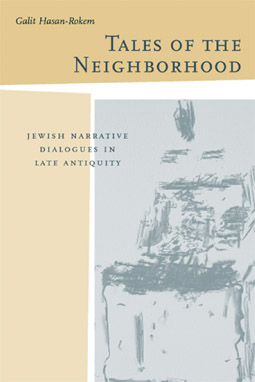 | Title: Tales of the neighborhood: Jewish narrative dialogues in late antiquity Author: Hasan-Rokem, Galit Published: University of California Press, 2003 Subjects: Jewish Studies | Folklore and Mythology | Women's Studies | Literature | Judaism Publisher's Description: In this lively and intellectually engaging book, Galit Hasan-Rokem shows that religion is shaped not only in the halls of theological disputation and institutions of divine study, but also in ordinary events of everyday life. Common aspects of human relations offer a major source for the symbols of religious texts and rituals of late antique Judaism as well as its partner in narrative dialogues, early Christianity, Hasan-Rokem argues. Focusing on the "neighborhood" of the Galilee that is the birthplace of many major religious and cultural developments, this book brings to life the riddles, parables, and folktales passed down in Rabbinic stories from the first half of the first millennium of the Common Era. [brief] Similar Items |
| 169. | 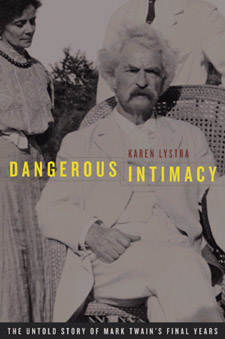 | Title: Dangerous intimacy: the untold story of Mark Twain's final years Author: Lystra, Karen Published: University of California Press, 2004 Subjects: Literature | Autobiographies and Biographies | Twain | American Literature | American Studies Publisher's Description: The last phase of Mark Twain's life is sadly familiar: Crippled by losses and tragedies, America's greatest humorist sank into a deep and bitter depression. It is also wrong. This book recovers Twain's final years as they really were - lived in the shadow of deception and prejudice, but also in the light of the author's unflagging energy and enthusiasm. Dangerous Intimacy relates the story of how, shortly after his wife's death in 1904, Twain basked in the attentions of Isabel Lyon, his flirtatious - and calculating - secretary. Lyon desperately wanted to marry her boss, who was almost thirty years her senior. She managed to exile Twain's youngest daughter, Jean, who had epilepsy. With the help of Twain's assistant, Ralph Ashcroft, who fraudulently acquired power of attorney over the author's finances, Lyon nearly succeeded in assuming complete control over Twain's life and estate. Fortunately, Twain recognized the plot being woven around him just in time. So rife with twists and turns as to defy belief, the story nonetheless comes to undeniable, vibrant life in the letters and diaries of those who witnessed it firsthand: Katy the housekeeper, Jean, Lyon, and others whose own distinctive, perceptive, often amusing voices take us straight into the heart of the Clemens household. Just as Twain extricated himself from the lies, prejudice, and self-delusion that almost turned him into an American Lear, so Karen Lystra liberates the author's last decade from a century of popular misunderstanding. In this gripping book we at last see how, late in life, this American icon discovered a deep kinship with his youngest child and continued to explore the precarious balance of love and pain that is one of the trademarks of his work. [brief] Similar Items |
| 170. | 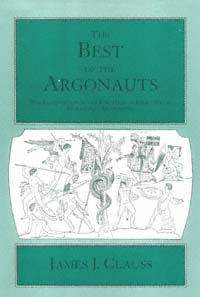 | Title: The best of the Argonauts: the redefinition of the epic hero in book one of Apollonius's Argonautica Author: Clauss, James Joseph Published: University of California Press, 1993 Subjects: Classics | Literature | Classical Literature and Language | Literary Theory and Criticism Publisher's Description: This revelatory exploration of Book One of the Argonautica rescues Jason from his status as the ineffectual hero of Apollonius' epic poem. James J. Clauss argues that by posing the question, "Who is the best of the Argonauts?" Apollonius redefines the epic hero and creates, in Jason, a man more realistic and less awesome than his Homeric predecessors, one who is vulnerable, dependent on the help of others, even morally questionable, yet ultimately successful.In bringing Apollonius' "curious and demanding poem" to life, Clauss illuminates two features of the poet's narrative style: his ubiquitous allusions to the poetry of others, especially Homer, and the carefully balanced structural organization of his episodes. The poet's subtextual interplay is explored, as is his propensity for underscoring the manipulation of the poetry of others through ring composition. [brief] Similar Items |
| 171. | 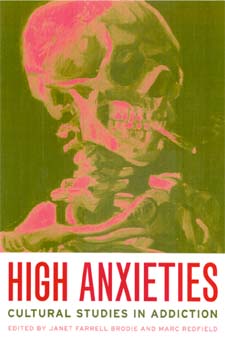 | Title: High anxieties: cultural studies in addiction Author: Brodie, Janet Farrell Published: University of California Press, 2002 Subjects: Literature | Media Studies | Gender Studies | Cognitive Science | Social and Political Thought | Art | Sociology Publisher's Description: High Anxieties explores the history and ideological ramifications of the modern concept of addiction. Little more than a century old, the notions of "addict" as an identity and "addiction" as a disease of the will form part of the story of modernity. What is addiction? This collection of essays illuminates and refashions the term, delivering a complex and mature understanding of addiction. Brodie and Redfield's introduction provides a roadmap for readers and situates the fascinating essays within a larger, interdisciplinary framework. Stacey Margolis and Timothy Melley's pieces grapple with the psychology of addiction. Cannon Schmitt and Marty Roth delve into the relationship between opium and the British Empire's campaign to control and stigmatize China. Robyn R. Warhol and Nicholas O. Warner examine accounts of alcohol abuse in texts as disparate as Victorian novels, Alcoholics Anonymous literature, and James Fenimore Cooper's fiction. Helen Keane scrutinizes smoking, and Maurizio Viano turns to the silver screen to trace how the representation of drugs in films has changed over time. Ann Weinstone and Marguerite Waller's essays on addiction and cyberspace cap this impressive anthology. [brief] Similar Items |
| 172. | 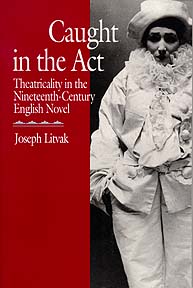 | Title: Caught in the act: theatricality in the nineteenth-century English novel Author: Litvak, Joseph Published: University of California Press, 1992 Subjects: Literature | English Literature | Literary Theory and Criticism | GayLesbian and Bisexual Studies Publisher's Description: Litvak demonstrates that private experience in the novels of Austen, Charlotte Brontë, Eliot, and James is a rigorous enactment of a public script that constructs normative gender and class identities. He suggests that the theatricality which pervades these novels enforces social norms while introdu . . . [more] Similar Items |
| 173. | 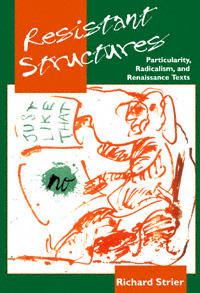 | Title: Resistant structures: particularity, radicalism, and Renaissance texts Author: Strier, Richard Published: University of California Press, 1997 Subjects: Literature | Literary Theory and Criticism | Renaissance Literature | English Literature Publisher's Description: Taking Wittgenstein's "Don't think, but look" as his motto, Richard Strier argues against the application of a priori schemes to Renaissance (and all) texts. He argues for the possibility and desirability of rigorously attentive but "pre-theoretical" reading. His approach privileges particularity and attempts to respect the "resistant structures" of texts. He opposes theories, critical and historical, that dictate in advance what texts must - or cannot - say or do.The first part of the book, "Against Schemes," demonstrates, in discussions of Rosemond Tuve, Stephen Greenblatt, and Stanley Fish among others, how both historicist and purely theoretical approaches can equally produce distortion of particulars. The second part, "Against Received Ideas," shows how a variety of texts (by Shakespeare, Donne, Herbert, and others) have been seen through the lenses of fixed, mainly conservative ideas in ways that have obscured their actual, surprising, and sometimes surprisingly radical content. [brief] Similar Items |
| 174. | 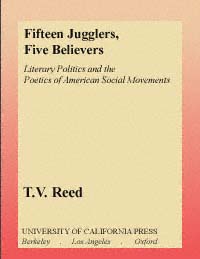 | Title: Fifteen jugglers, five believers: literary politics and the poetics of American social movements Author: Reed, T. V. (Thomas Vernon) Published: University of California Press, 1992 Subjects: Literature | American Literature | Literary Theory and Criticism Publisher's Description: T.V. Reed urges an affiliation between literary theory and political action - and between political action and literary theory. What can the "new literary theory" learn from "new social movements"; and what can social activists learn from poststructuralism, new historicism, feminist theory, and neomarxism?In strikingly new interpretations of texts in four different genres - Agee and Evans's Let Us Now Praise Famous Men , Ellison's Invisible Man, Mailer's Armies of the Night , and the ecofeminist Women's Pentagon Actions of the early 1980s - Reed shows how reading literary texts for their political strategies and reading political movements as texts can help us overcome certain rhetorical traps that have undermined American efforts to combat racism, sexism, and economic inequality. [brief] Similar Items |
| 175. | 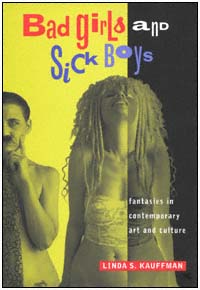 | Title: Bad girls and sick boys: fantasies in contemporary art and culture Author: Kauffman, Linda S 1949- Published: University of California Press, 1998 Subjects: Art | Literature | Cinema and Performance Arts | Popular Culture | American Studies | Gender Studies Publisher's Description: Linda S. Kauffman turns the pornography debate on its head with this audacious analysis of recent taboo-shattering fiction, film, and performance art. Investigating the role of fantasy in art, politics, and popular culture, she shows how technological advances in medicine and science (magnetic resonance imaging, computers, and telecommunications) have profoundly altered our concepts of the human body. Cyberspace is producing new forms of identity and subjectivity. The novelists, filmmakers, and performers in Bad Girls and Sick Boys are the interpreters of these brave new worlds, cartographers who are busy mapping the fin-de-millennium environment that already envelops us. Bad Girls and Sick Boys offers a vital and entertaining tour of the current cultural landscape. Kauffman boldly connects the dots between the radical artists who shatter taboos and challenge legal and aesthetic conventions. She links writers like John Hawkes and Robert Coover to Kathy Acker and William Vollmann; filmmakers like Ngozi Onwurah and Isaac Julien to Brian De Palma and Gus Van Sant; and performers like Carolee Schneemann and Annie Sprinkle to the visual arts. Kauffman's lively interviews with J. G. Ballard, David Cronenberg, Bob Flanagan, and Orlan add an extraordinary dimension to her timely and convincing argument. [brief] Similar Items |
| 176. | 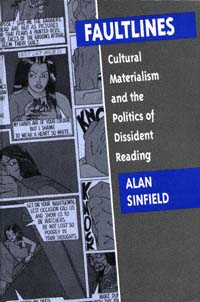 | Title: Faultlines: cultural materialism and the politics of dissident reading Author: Sinfield, Alan Published: University of California Press, 1992 Subjects: Literature | Renaissance Literature | English Literature | Literary Theory and Criticism Publisher's Description: If we come to consciousness within a language that is complicit with the social order, how can we conceive, let alone organize, resistance to that social order? This key question in the politics of reading and subcultural practice informs Alan Sinfield's book on writing in early-modern England.New historicism has often shown people trapped in a web of language and culture. In lively discussions of writings by Shakespeare, Marlowe, Sidney, and Donne, Sinfield reassesses the scope of dissidence and control. The early-modern state, Christianity, and the cultural apparatus, despite an ideology of unity and explicit violence, could not but allow space to challenging voices. Sinfield shows that disruptions in concepts of hierarchy, nationality, gender, and sexuality force their way into literary texts.Sinfield is often provocative. He "rewrites" Julius Caesar to produce a different politics, compares Sidney's idea of poetry to Leonid Brezhnev's, and reinstates the concept of character in the face of post-structuralist theory. He keeps the current politics of literary study in view, especially in a substantial chapter on Shakespeare in the U.S. Sinfield subjects interactions between class, ethnicity, sexuality, and the professional structures of the humanities to a detailed and hard-hitting critique, and argues for new commitments to collectivities and subcultures. [brief] Similar Items |
| 177. | 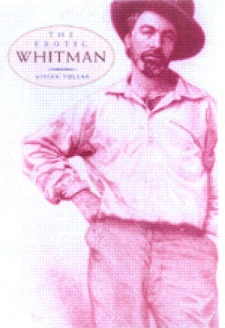 | Title: The erotic Whitman Author: Pollak, Vivian R Published: University of California Press, 2000 Subjects: Literature | American Studies | Gender Studies | American Literature | Literary Theory and Criticism Publisher's Description: In this provocative analysis of Whitman's exemplary quest for happiness, Vivian Pollak skillfully explores the intimate relationships that contributed to his portrayal of masculinity in crisis. She maintains that in representing himself as a characteristic nineteenth-century American and in proposing to heal national ills, Whitman was trying to temper his own inner conflicts as well. The poet's expansive vision of natural eroticism and of unfettered comradeship between democratic equals was, however, only part of the story. As Whitman waged a conscious campaign to challenge misogynistic and homophobic literary codes, he promoted a raceless, classless ideal of sexual democracy that theoretically equalized all varieties of desire and resisted none. Pollak suggests that this goal remains imperfectly achieved in his writings, which liberates some forbidden voices and silences others. Integrating biography and criticism, Pollak employs a loosely chronological organization to describe the poet's multifaceted "faith in sex." Drawing on his early fiction, journalism, poetry, and self-reviews, as well as letters and notebook entries, she shows how in spite of his personal ambivalence about sustained erotic intimacy, Whitman came to imagine himself as "the phallic choice of America." [brief] Similar Items |
| 178. | 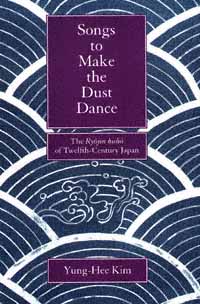 | Title: Songs to make the dust dance: the Ryōjin hishō of twelfth-century Japan Author: Kwon, Yung-Hee K Published: University of California Press, 1994 Subjects: Literature | Asian Literature | Literary Theory and Criticism | Japan | Asian Studies Publisher's Description: Breaking through the long-established image of Heian Japan (794-1185) as a culture dominated by ritualized aristocratic values, Yung-Hee Kim presents the picture of a country in transition, filled with a wide variety of common people responding to very ordinary situations. In popular songs called imayo , they expressed their concerns about religion, love, aging, and even current affairs.In 1179 Emperor Go-Shirakawa compiled Ryojin hisho , a twenty-volume collection of this song genre that juxtaposes the sacred with the profane, the high with the low, the male with the female, the old with the new. Kim makes these songs the core of her book, in translations that faithfully reflect the sounds and images of the originals and bring them to life within their own literary and cultural context. [brief] Similar Items |
| 179. | 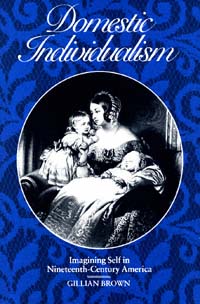 | Title: Domestic individualism: imagining self in nineteenth-century America Author: Brown, Gillian Published: University of California Press, 1992 Subjects: Literature | Literary Theory and Criticism | American Literature | Gender Studies | United States History | American Studies Publisher's Description: Gillian Brown's book probes the key relationship between domestic ideology and formulations of the self in nineteenth-century America. Arguing that domesticity institutes gender, class, and racial distinctions that govern masculine as well as feminine identity, Brown brilliantly alters, for literary critics, feminists, and cultural historians, the critical perspective from which nineteenth-century American literature and culture have been viewed.In this study of the domestic constitution of individualism, Brown traces how the values of interiority, order, privacy, and enclosure associated with the American home come to define selfhood in general. By analyzing writings by Stowe, Hawthorne, Melville, Fern, and Gilman, and by examining other contemporary cultural modes - abolitionism, consumerism, architecture, interior decorating, motherhood, mesmerism, hysteria, and agoraphobia - she reconfigures the parameters of both domesticity and the patterns of self it fashions. Unfolding a representational history of the domestic, Brown's work offers striking new readings of the literary texts as well as of the cultural contexts that they embody. [brief] Similar Items |
| 180. | 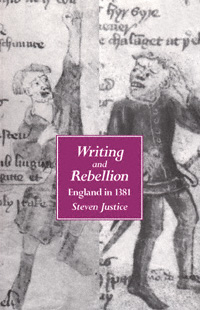 | Title: Writing and rebellion: England in 1381 Author: Justice, Steven 1957- Published: University of California Press, 1994 Subjects: Literature | Literary Theory and Criticism | Medieval Studies | Medieval History | European History Publisher's Description: In this compelling account of the "peasants' revolt" of 1381, in which rebels burned hundreds of official archives and attacked other symbols of authority, Steven Justice demonstrates that the rebellion was not an uncontrolled, inarticulate explosion of peasant resentment but an informed and tactical claim to literacy and rule.Focusing on six brief, enigmatic texts written by the rebels themselves, Justice places the English peasantry within a public discourse from which historians, both medieval and modern, have thus far excluded them. He recreates the imaginative world of medieval villagers - how they worked and governed themselves, how they used official communications in unofficial ways, and how they produced a disciplined insurgent ideology. [brief] Similar Items |